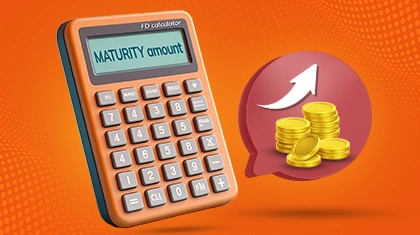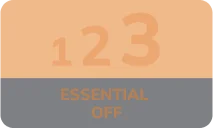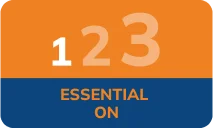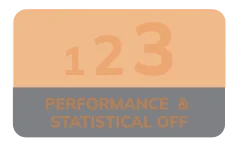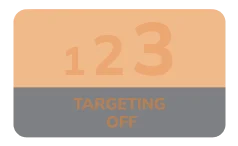THE
ORANGE
HUB
Short Term FD Vs Long Term FD - Interest Rate & Benefits

Achieving financial goals in life is important for everyone. Whether it is buying a dream home, funding your child's education, planning for a comfortable retirement or going on a dream vacation, smart financial planning is the key. Fixed Deposit (FD) is a reliable and secure investment, providing stability and assured returns. Let us learn more about FD and understand why it is an excellent investment.
What is Short Term Fixed Deposit?
A short-term FD is an investment option where you deposit money with a bank for a shorter period that ranges from 7 days to 12 months. It is ideal for those looking to earn interest on idle funds without locking them away for too long. You get assured returns, and the money can be withdrawn after the term ends or rolled over. It’s a safe and easy way to grow your savings in the short run. Short-term FDs are also a good choice for emergency funds or saving for near- future expenses without market risks.
Understanding Short-Term FD Rates
Short-term FD interest rates vary depending on the deposit tenure, even within short-term options. For example, a 6-month FD may offer higher interest than a 30-day FD. With ICICI Bank, the Short Term FD rates start from 2.75% p.a. for general and 3.25% p.a. for senior citizens. These rates are fixed at the time of deposit and don’t change during the FD term. Short-term FD rates help you earn more from idle money while keeping your funds relatively accessible.
What is Long Term Fixed Deposit?
A long-term FD is where your money is invested for a longer duration, say, ranging from 1 year to 10 years. It is ideal for those who want stable and assured returns over time. Long-term FDs help with financial planning for future needs like education, marriage, or retirement. You earn attractive interest rates, and the rate stays fixed throughout the deposit period. These FDs also discourage frequent withdrawals, making them good for long-term goals. Long-term FDs are safe, low-risk investments, especially suitable for conservative investors seeking steady income.
Understanding Long-Term FD Rates
Long-term FD rates are higher than short-term rates because your money is locked in for longer period. Banks offer attractive interest rates from 6.6% p.a. to 7.1% p.a. for general and senior citizens, respectively. The rate is fixed at the time of opening the FD, which means your returns are protected from market changes. This makes long-term FDs a great choice for consistent income over time.
Benefits of Short-Term FDs
Explore the advantages of short-term FDs with these key benefits:
- Quick liquidity: They offer quick access to funds, making them suitable for those who may need liquidity in the short term.
- Interest Rate flexibility: With varying rates for different durations, investors can choose the tenure that aligns with their financial goals.
- Opportunity for reinvestment: Upon maturity, you can reinvest your funds at the prevailing interest rates or make necessary adjustments based on changing financial conditions.
Drawbacks of Short-Term FDs
Consider these limitations before investing in short-term FDs:
- Lower Interest Rates: While short-term FDs offer quick liquidity, the trade-off is lower interest rates compared to their long-term counterparts. Investors looking for substantial returns might find these rates less attractive.
- Reinvestment risk: Upon maturity, investors face the challenge of reinvesting their funds at prevailing interest rates. If rates have decreased, reinvesting may result in lower returns than initially anticipated.
- Limited wealth accumulation: Short-term investments may not provide the same level of wealth accumulation as long-term options. For those with significant financial goals, relying solely on short-term FDs may hinder long-term wealth growth.
Benefits of Long-Term FDs
Unveil the key benefits of investing in long-term FDs:
- Higher interest earnings: They provide higher interest rates, enhancing the overall returns on your investment compared to shorter tenures.
- Stable returns: By opting for a longer tenure, you benefit from stable and predictable returns, reducing the impact of market fluctuations.
- Financial planning: They are suitable for long-term financial goals like purchasing a home or planning for your retirement, offering a disciplined approach to saving.
Drawbacks of Long-Term FDs
Assess these potential downsides before committing to long-term FDs:
- Reduced liquidity: They lack the liquidity of their short-term counterparts. Investors commit their funds for an extended period, limiting access to their capital in case of unexpected financial needs.
- Interest Rate rigidity: While long-term FDs offer higher interest rates, they lock investors into a specific rate for the entire tenure. If interest rates rise during the tenure, investors miss out on potential increased returns.
- Opportunity cost: The extended lock-in period might result in an opportunity cost, especially if market conditions change or better investment opportunities arise. Investors might miss out on higher returns available in more dynamic investment options.
Considerations for Investors
Explore these crucial factors when choosing the right investment:
- Risk tolerance: Short-term investments are generally less exposed to market risks compared to long-term ones. If you prefer lower risk and quick liquidity, short-term FDs might align better with your risk tolerance.
- Financial Goals: Align the tenure of your FD with your financial goals. If you have short-term objectives like a vacation or buying a gadget, short-term FDs may be more suitable. For long-term goals like education or home purchase, long-term FD offers stability.
- Interest Rate outlook: Consider prevailing FD interest rates and the economic outlook. If rates are expected to rise, locking into a long-term deposit might be beneficial. Conversely, if rates are high, short-term reinvestment opportunities could be lucrative.
Balancing Short-Term and Long-Term FDs
Maximise benefits by strategically balancing short-term and long-term FD investments:
- Diversification: A balanced investment portfolio often includes both short-term and long-term FDs. This diversification can mitigate the drawbacks of each, providing stability, liquidity and reasonable returns.
- Goal-specific allocation: Allocate funds to short-term or long-term FDs based on specific financial goals. Short-term deposits can cater to immediate needs, while long-term deposits align with goals like education or retirement planning.
- Periodic review: Regularly reassess your financial goals, market conditions and interest rate trends. Periodic reviews empower investors to make informed decisions about renewing or reallocating their FD investments.
Overview
Here are the key differences between short-term and long-term FDs:
Factors |
Short-Term FDs |
Long-Term FDs |
Investment Period |
Typically, 7 days to 1 year |
Over 12 months to 10 years |
Interest Rates |
Generally lower compared to long-term FDs |
Higher interest rates, providing better returns over time |
Liquidity |
Offers quick liquidity, allowing access to funds |
Limited liquidity due to the extended lock-in period |
Reinvestment Risk |
Face the challenge of reinvesting at potentially lower rates |
Locked into a fixed interest rate for the entire tenure |
Wealth Accumulation |
May not contribute significantly to long-term wealth growth |
Provides an opportunity for substantial wealth accumulation |
Opportunity Cost |
Lower opportunity cost as funds can be reinvested sooner |
Higher opportunity cost due to the extended lock-in period |
Flexibility |
Provides flexibility to respond to changing market conditions |
Offers less flexibility and premature withdrawal may incur penalties |
Goal Alignment |
Suited for short-term financial goals and immediate needs |
Aligned with long-term goals like education or retirement planning |
Risk Tolerance |
Lower risk due to shorter tenure and flexibility |
Moderate risk due to a more extended lock-in and rate rigidity |
Conclusion
When it comes to Fixed Deposits, it is essential to align your investment strategy with your financial goals and time horizon. ICICI Bank offers competitive interest rates, especially for senior citizens, providing a secure avenue for wealth preservation. Presently, with interest rates reaching up to 6.60% per annum, ICICI Bank FDs are certainly worth looking up. Whether opting for a short-term FD or a long-term FD, the reliability of ICICI Bank's offerings makes them a trusted companion in uncertain times, providing assured and guaranteed returns.
FAQs
What Is The Shortest Period For FD?
The shortest period for a Fixed Deposit is 7 days. You can open an FD for 7 days and go up to 10 years, depending on your financial goals. A short-term period is suitable for people who want to park money for a very short time and still earn some interest safely.
Are Short-Term FDs Taxed?
Yes, short-term FD interest is taxable. The interest earned is added to your total income and taxed as per your income slab. If the yearly interest exceeds ₹50,000 (₹1,00,000 for senior citizens), TDS is deducted by the bank. You can save this by submitting Form 15G/15H if eligible.
Can I Apply For An FD For 1 Month?
Yes, you can open an FD for 1 month (30 days). It’s called a short-term FD and is ideal if you want to earn safe, fixed returns for a brief period.
What Is The Minimum Amount Required To Invest In A Short-Term FD?
The minimum amount to invest in a short-term FD in ICICI Bank is ₹10,000 and for minors, it is ₹2000. It is better to start with a good amount so that you can get high returns in the future.
Can Tax-Saver FDs Be Considered As Short-Term FDs?
No, Tax Saver FDs are not short-term. This FD has a 5-year lock-in period and cannot be withdrawn early. It offers income tax benefits under Section 80C (under the Old Tax regime) for up to ₹ 1.5 lakh per year. Short-term FDs, on the other hand, range from 7 days to less than 1 year and offer no tax exemptions under section 80C.
Will The Short-Term FD Be Done In 3 Months?
Yes, you can open a short-term FD for 3 months (90 days). It’s a popular option for those who want to park money for a short duration and earn better returns than other savings options. However, the returns may be a bit low for your FD.
What Is The Minimum Tenure For The Short-Term Fixed Deposit?
The minimum tenure for a short-term FD is 7 days. These short durations are ideal if you want quick access to your funds while still earning fixed, low-risk interest on your idle money for a few days.
Which Is The Better Option – A Short-Term FD Or A Long-Term FD?
It depends on your financial goal. Short-term FDs are better for quick savings and emergency funds, offering flexibility. Long-term FDs are ideal for future goals, giving higher returns over time. Choose short-term for liquidity and long-term for wealth growth. Both are safe, fixed-return investment options.
Scroll to top



